In this post we welcome guest writer Chuck Rizzo, a wildlife biologist for the Forest Preserves of Cook County, who describes his work with local birds, including a fascinating description of a Leucistic Red-tailed Hawk.
As a Wildlife Biologist for the Forest Preserve District of Cook County, one of my jobs is to capture birds, measure and weigh them, and if possible, determine sex. For some species I will draw blood to check for heavy metals contamination and disease. A disease I check for, depending on species, is avian Influenza.
Blood samples on a Dried Blood Spot (DBS) Card. The test tube behind the DBS card is a completed Avian Influenza test that was negative.photo: Chuck Rizzo
As part of FPDCC wildlife biology education and outreach, we sometimes work with local college classes. All birds are handled with proper training, permits, and treated with the utmost respect before banding and release.
One of the species that I work with is the Red-tailed Hawk (RTHA). Red-tailed Hawks are really good to work with if I can catch them. Their size makes it a little easier to draw blood, they are relatively abundant, and since they are at the top trophic level you can monitor such things as contaminates and diseases as they move through the ecosystem.
Generally, you cannot tell one Red-tailed Hawk from another, other than distinguishing adults from young. Usually, you can tell a younger bird from an older bird by the color of the tail, and eye color if you can get a good look at the eyes. Younger birds have a brownish tail with black bars, usually yellowish eyes.
A young Red-tailed Hawk, with yellowish eyes, photo: Chuck Rizzo
A young Red-tailed Hawk, photo: Chuck Rizzo
Adults generally have a reddish tail with one black terminal band, though this can vary, and usually dark brown eyes.
Adult Red-tailed Hawk with brown eyes, photo: Chuck Rizzo
Adult Red-tailed Hawk, photo: Chuck Rizzo
One Red-tailed hawk evaded my attempts at capture for about six years. How do I know that if it is hard to tell one red-tail from another? Well, this hawk has a genetic trait known as leucism.
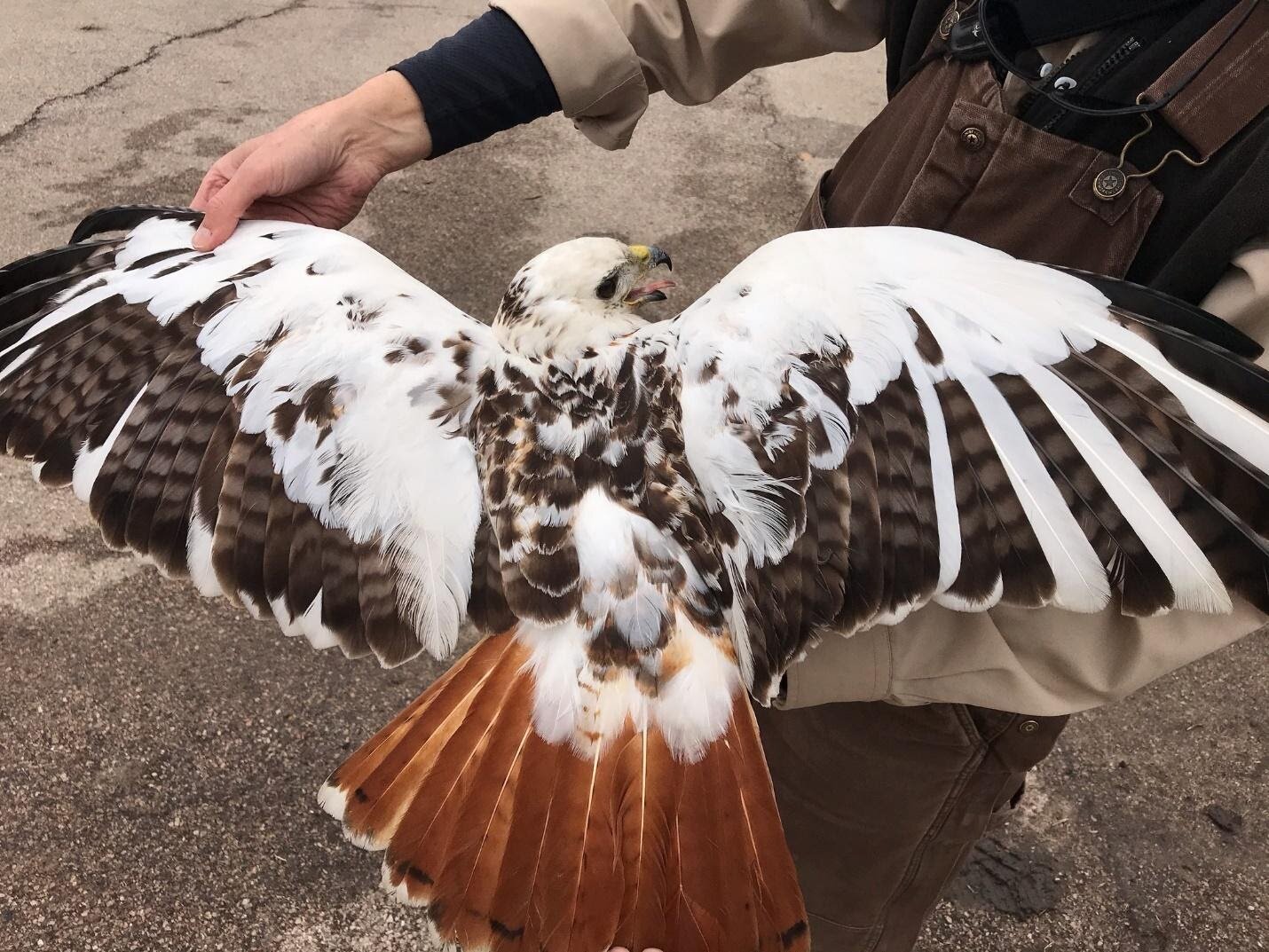

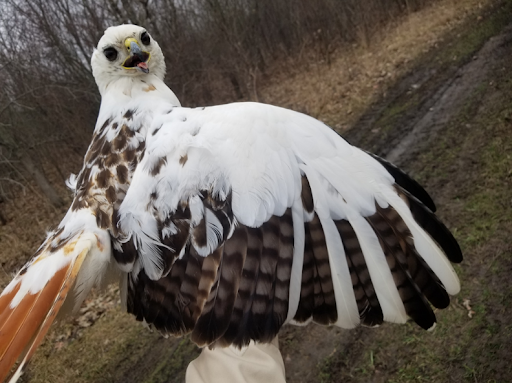
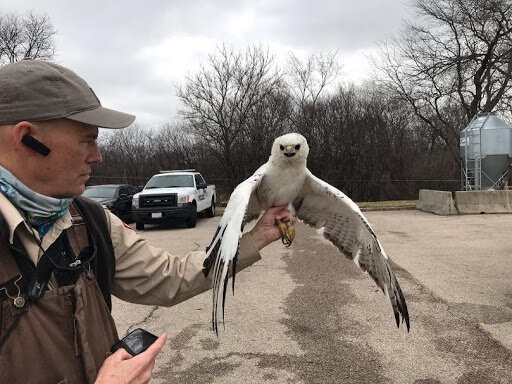
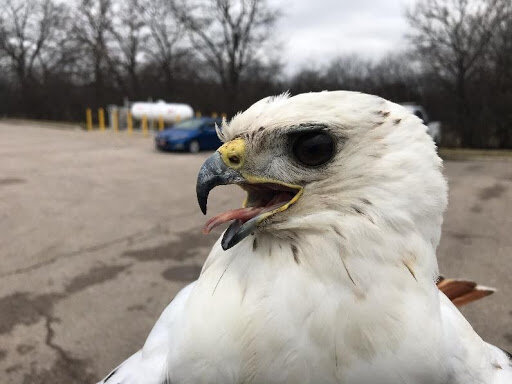
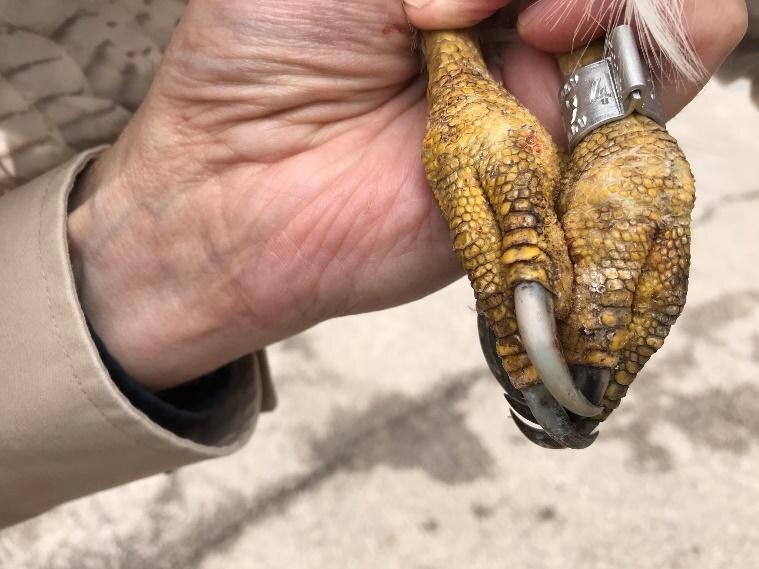
Leucism in birds is a plumage condition caused by a genetic mutation that prevents pigment, particularly melanin, from being properly deposited in a bird’s feathers. It is similar to albinism, which is a complete lack of melanin. Birds with leucism can be all white or, as with this bird, it can be patchy. The opposite of leucism is melanism and this is the over development of the dark-colored pigment melanin in the skin or its appendages.
It is really a great privilege to be able to handle any bird - whether it is a passerine, raptor or other type of bird - and to be able to collect information on it for a better understanding of birds and the environment that we share with them. This was another great opportunity to admire the diversity in wildlife. Usually as a biologist you do not name animals, however, due to the uniqueness of this red-tailed hawk, he was nicknamed the White Whale or Moby Dick. He has been checked for avian influenza and his blood sample has been sent to the lab for analysis for heavy metals.
Moby Dick has returned to the wild wearing the band #09094.
Moby Dick, photo: Chuck Rizzo



